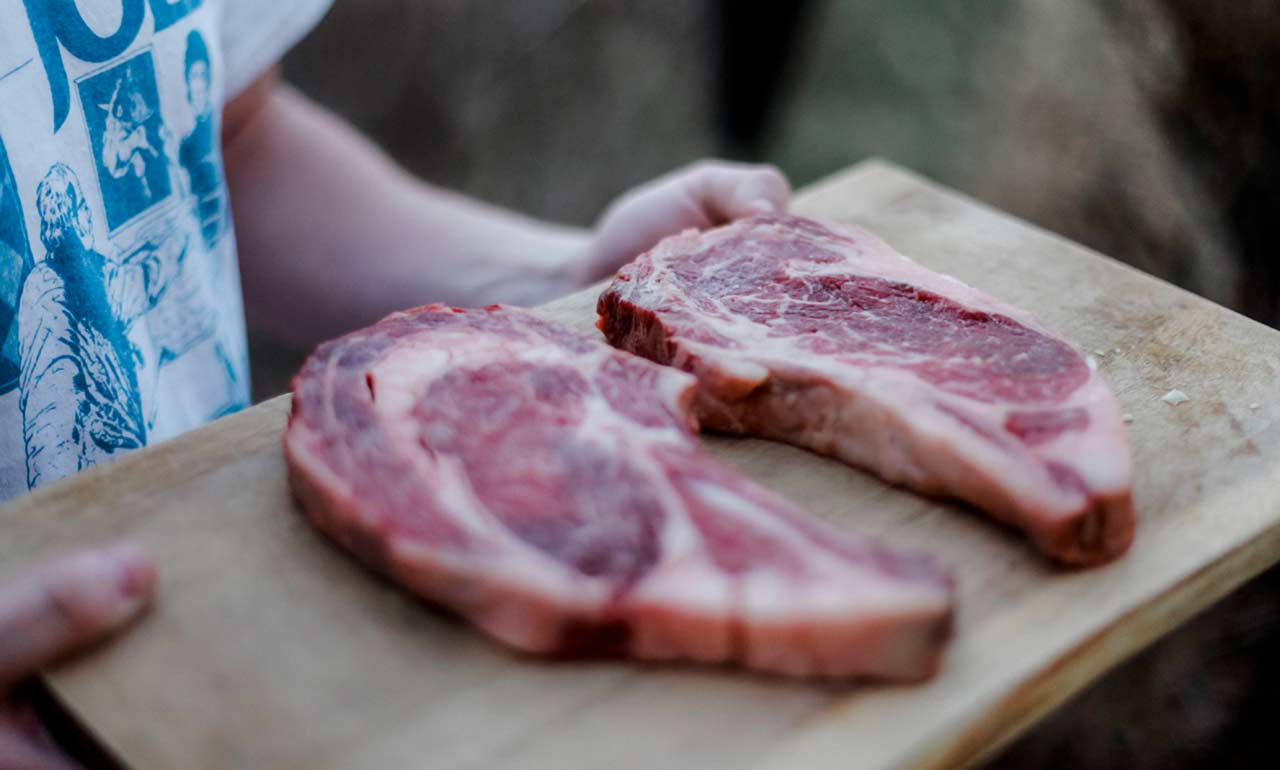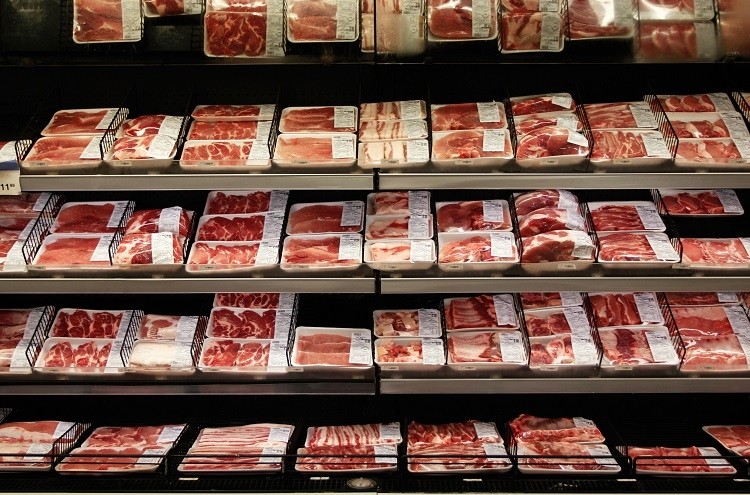Discover the Art of the Butcher's Cut in a Modern Meat Market
In the ever-evolving landscape of contemporary meat markets, the butcher's cut has transcended its typical origins, combining old-time craftsmanship with modern practices. bagley farms meat market edwardsville il. Today's butchers are not simply cpus of meat; they are knowledgeable artisans who highlight sustainability and moral sourcing. Their proficiency in selecting and preparing cuts tailored to particular cooking needs offers an exceptional dining experience. What genuinely sets the modern-day butcher apart is their capacity to create a much deeper connection between customers and the origins of their meat. How do these masters equilibrium custom with development, and what implications does this have for the future of meat intake?
Development of Butchery Techniques

The mid-20th century saw butchery techniques further refined by clinical understandings into muscle biology and meat aging, enhancing both inflammation and preference. Advancements like vacuum packaging and refrigeration extended item shelf-life, permitting butchers to branch out offerings and enhance quality assurance. This period additionally noted the rise of specialized tools, such as band saws and meat slicers, which boosted precision and efficiency in meat handling.
The 21st century has actually introduced electronic innovation into the butchery world. Electronic systems now assist in monitoring animal provenance and optimizing cuts to fulfill details consumer preferences. In addition, a renewal in artisanal butchery has arised, mixing traditional abilities with contemporary expertise to accommodate consumers looking for ethical and lasting meat choices. This advancement highlights a vibrant interplay in between custom and technology, meeting modern needs while maintaining the craft's heritage.

Understanding Meat Cuts

Recognizing the details of meat cuts is crucial for both butchers and customers looking for high quality and value. Each cut comes from a various component of the pet, giving unique flavors, appearances, and food preparation techniques. Mastery of these differences not just boosts culinary experiences yet likewise makes the most of the utility of each carcass. For butchers, exact cuts mirror ability and respect for the craft, guaranteeing minimal waste and optimum yield.
The primary groups of meat cuts include primitive, sub-primal, and retail cuts. Primal cuts, such as the loin, rib, and chuck, are the huge sections originally separated from the carcass. Butchers after that break these down further right into sub-primal cuts, prior to lastly producing retail cuts readily available to consumers, like ribeye or tenderloin. Each phase requires cautious attention to physiological framework and muscle mass make-up.
Recognizing muscle structure is crucial; muscle mass made use of more often by the pet tend to be tougher and are best matched for slow cooking approaches, while less-used muscles, like those discovered in the loin, are a lot more tender and perfect for useful site grilling or roasting. Experience with these differences empowers consumers to make educated selections, enhancing their culinary ventures.
Selecting Top Quality Meat
Choosing the appropriate meat entails more than just selecting a visually attractive piece from the display screen. The art of picking high quality meat requires a critical eye and understanding of particular attributes that indicate quality and excellence.
Second of all, think about the marbling, which refers to the white streaks of fat within the muscle mass. Proper marbling is a vital sign of tenderness and taste, as it melts throughout cooking, boosting the meat's juiciness. Keep in mind, higher marbling frequently associates with premium top quality cuts, such as USDA Prime.
Structure is another important element; meat needs to feel strong to the touch, not slimy or extremely soft. Additionally, be conscious of the scent. Fresh meat must have a clean, neutral odor, devoid of any type of sour or off-putting odors.
Coupling Cuts With Cooking Techniques
Successfully combining cuts of meat with the appropriate cooking approaches is important for attaining ideal taste and texture. Different cuts differ in inflammation, marbling, and connective tissue material, each calling for specific methods to open their possibility. Tender cuts like filet mignon and ribeye, with their intrinsic marbling, advantage from high-heat, quick-cooking methods such as grilling or pan-searing. These techniques improve the meat's all-natural tastes and ensure a juicy finish.
Alternatively, harder cuts like brisket and chuck roast are abundant in collagen, which damages down right into jelly when prepared gradually. These cuts are ideal for braising or sluggish roasting, allowing the meat to tenderize in time and establish deep, complicated flavors. Cuts such as short ribs and pork shoulder get on well with slow-cooking methods, where extended cooking times change their durable appearances right into succulent dishes.
Lamb shanks and oxtail, which require long term food preparation to soften, are best candidates for stewing or slow-moving simmering. These approaches coax out rich, hearty tastes while keeping wetness. By comprehending the unique characteristics of each cut, cooks and home chefs alike can elevate their culinary productions, ensuring each recipe is both pleasing and unforgettable.
The Butcher's Role Today
Navigating the evolving landscape of the modern-day meat market, the butcher's function today prolongs beyond mere prep work of cuts. Contemporary butchers are culinary look these up craftsmens, teachers, and advocates for lasting methods. They connect the void between the farm and the fork by making sure ethical sourcing, recognizing animal husbandry, and prioritizing openness in the supply chain. This change shows the growing customer demand for high quality over amount, where provenance and animal well-being are extremely important.
Along with crafting accurate cuts, butchers currently engage straight with consumers, using cooking guidance and tailoring choices to fit private demands and choices. Their knowledge in meat aging, marbling, and flavor accounts encourages consumers to make enlightened decisions, improving their cooking experiences. This individualized service exemplifies the butcher's progressing function as a trusted expert in the kitchen.
Furthermore, butchers are crucial in minimizing waste, using entire pets to develop diverse products such as sausages and stocks - bagley farms meat market edwardsville il. This detailed strategy not just respects the animal but likewise lines up with modern sustainability objectives. By doing this, the contemporary butcher symbolizes both practice and technology, check this site out adapting to an ever-changing market while preserving the artistry and integrity of their craft

Verdict
Proficiency in understanding varied meat cuts and quality signs empowers butchers to supply informed suggestions, aligning certain cuts with optimal cooking approaches. By honoring historic techniques while accepting modern needs, the butcher's function continues to be vital in today's advanced meat market.
Comments on “What Makes Bagley Farms Meat Market Edwardsville IL Stick Out for Meat Lovers”